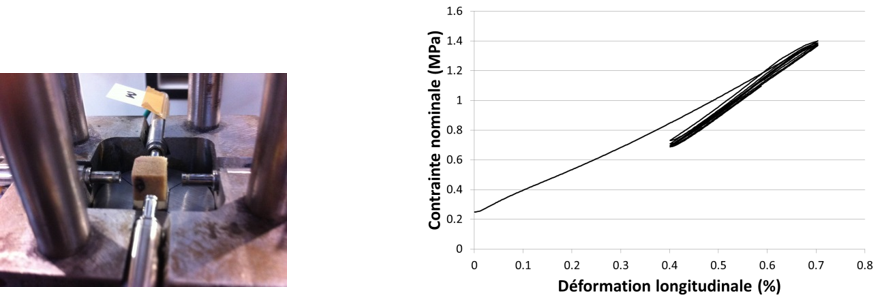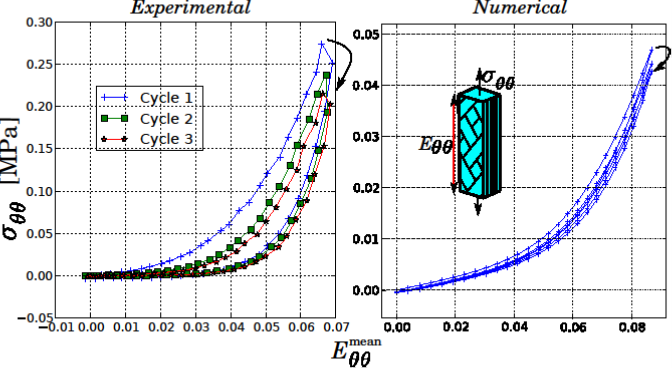Module code UE 962: Mechanical behaviour of biological tissues (60h = 30 lectures + 22H tutorials + 8h lab) – 6 ECTS
Module coordinator: Dr. Adrien Baldit (adrien.baldit@univ-lorraine.fr)
Description:
Knowledge of the mechanical behavior of biological tissues is required to understand the clinical issues for rehabilitation and design new prosthetic solutions. This module firstly aims to teach students how to model and characterize the mechanical behavior of biological tissues using classical models.
The lectures will progressively talk about the composition and structure of bone and soft tissues to explain and justify the mechanical properties of those tissues (constitutive laws, ranges).
Then experimental methods and issues specific to biological tissues will be taught taking into account the ethical principles to conduct research on animals, human bodies and human- beings. Finally, methods for identification of parameters for mechanical and multi-physical models will be introduced.
The second aim of this module is to give students the tools to develop models on the instantaneous and adaptive behavior of biological tissues. In a first step, an introduction to adaptive behavior is proposed by describing the mechanisms of growth, adaptation, remodeling and healing. Secondly, various micromechanical approaches are studied by focusing on their validity domains and their possibilities of application on biological tissues and substitutes.


Pre-requisites:
Continuum mechanics for solids: tensor calculus and Einstein notation, Theory of elasticity (small strains), Isotropic and anisotropic constitutive laws, mechanics of plastic strain, plasticity criteria.
Basic knowledge concerning experimental tests on conventional materials..
Skills and learning outcomes:
|
Skills |
Level |
Learning outcomes |
|
Skill 9 To analyse the functioning of living organisms and/or human body through a scientific approach: – taking into account the experience of clinicians – using scientific and technical knowledge |
3 |
|
|
Skill 9 To analyse the functioning of living organisms and/or human body through a scientific approach: – taking into account the experience of clinicians – using scientific and technical knowledge |
2 |
|
|
Skill 9 To analyse the functioning of living organisms and/or human body through a scientific approach: – taking into account the experience of clinicians – using scientific and technical knowledge |
1 |
|
|
Skill 10 To propose an anatomic and functional restauration solution adapted to a clinical issue – taking into account the specificities of a given patient – proposing design solutions adapted to manufacturing processes and techniques in biomedicine – identifying the risks related to the implementation in real conditions – taking into account regulatory aspects |
3 |
|
|
Skill 5 To know how to communicate in both written and spoken French and English and become a team manager (to plan, organize, create and conduct meetings in an efficient way). |
3 |
|
